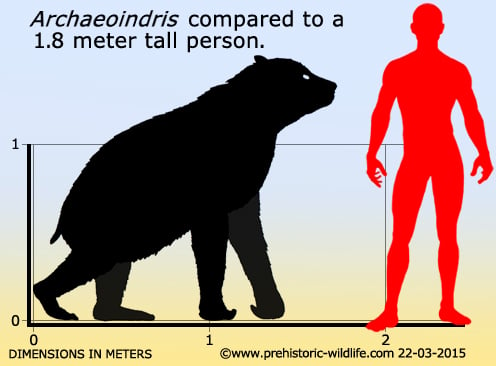

Global temperatures were changing, and land-dwelling animals everywhere were being affected. Climate change is one of the usual suspects, and we know that the earth's habitats were going through some massive changes at the time these animals went extinct.

It has been speculated that the arrival of modern humans, with spears and arrows, led to their extinction, but it is reasonable to assume that there was something much more far-reaching happening at the time that wiped these animals out. Regardless of this research, it is decidedly unlikely that this giant lived in this way, and like its living relatives, the giant ground sloth was probably a herbivore, but it may have been able to use its forelimbs and teeth to defend itself.Īs with almost all of the long-dead animals that once roamed South America, we cannot be certain what brought about the demise of the giant ground sloth. The image of a 5-tonne brute ambling over to a group of dire wolves, scaring them off, and then devouring their kill is quite fantastic. The claws and teeth of this giant mammal have led some people to suggest that the giant ground sloth was not a plant feeder at all, but a scavenging animal that used its size to drive predatory animals from their kill before digging in to the carcass. They and the jaws they sit in appear to be adapted for slicing, much like the jaws and teeth of meat-eating animals. They are not the normal grinding blocks that are found in the mouths of plant-feeding mammals. The animal's teeth also give intriguing insights into the way it fed. The research suggest that the muscles of the forelimbs were used to power the large claws into other animals, and maybe not only in defense. Such an ability was of little use to a plant-nibbling animal that needed a strong, sustained pull to bring tasty leaf-bearing branches within reach of its mouth. These studies suggest the forelimbs of a giant ground sloth were adapted for fast movement. The giant ground sloth may have been able to make better progress on all fours, possibly reserving its two-legged stance for feeding or defense.Īs the giant ground sloth is related to the living sloths, it was always assumed that they were gentle plant-eating animals, but some recent, controversial scientific research has shed some light on how this massive beast used its forelimbs. The animal could certainly rear up onto its hind legs, and perhaps even manage to amble around in this posture, using its thick tail as a strong prop, but it had to shuffle around on the outside of its feet with the long claws pointing inward. We know from the skeletons of this animal that the bones of the hind feet were arranged in a very peculiar way, making it impossible for the living animal to place its feet flat on the ground. In life, the digits of the animal were tipped with long claws, which may have been used to grab plant food or even as weapons. The limb bones and their supporting structures are massive and give an impression of a heavy, powerful animal. Several skeletons (real and copies) of this animal are to be found in museum collections around the world, and one of the most astonishing things about these remains is the size of the bones. Fully grown, the giant ground sloth was about 6 m long, and estimates of its weight range between 4 and 5 tonnes. This was the giant ground sloth, and it was an immense and unusual animal.

A perfect example of this long-gone South American fauna is a ground-dwelling sloth that was the same size as an elephant. South America is probably the most biodiverse landmass on earth, yet, many thousands of years ago, the fauna of this continent was even more remarkable. Where did it live? The giant ground sloths were found throughout South America.

Scientific name: Megatherium americanum Scientific classification: Phylum: Chordata Class: Mammalia Order: Pilosa Family: Megatheriidae When did it become extinct? The last giant ground sloths are thought to have died out around 8,000 to 10,000 years ago. The largest species (Megatherium americanum), the one depicted here, was about the same size as a fully grown elephant. (Natural History Museum at Tring) Giant Ground Sloth-The ground sloths were perhaps the most impressive of all the extinct South American mammals. They could even rear up on their hind legs to reach lofty food. Disappeared Species Giant Ground Sloth-The human silhouette in this picture gives an idea of how huge these extinct sloths were.


 0 kommentar(er)
0 kommentar(er)
